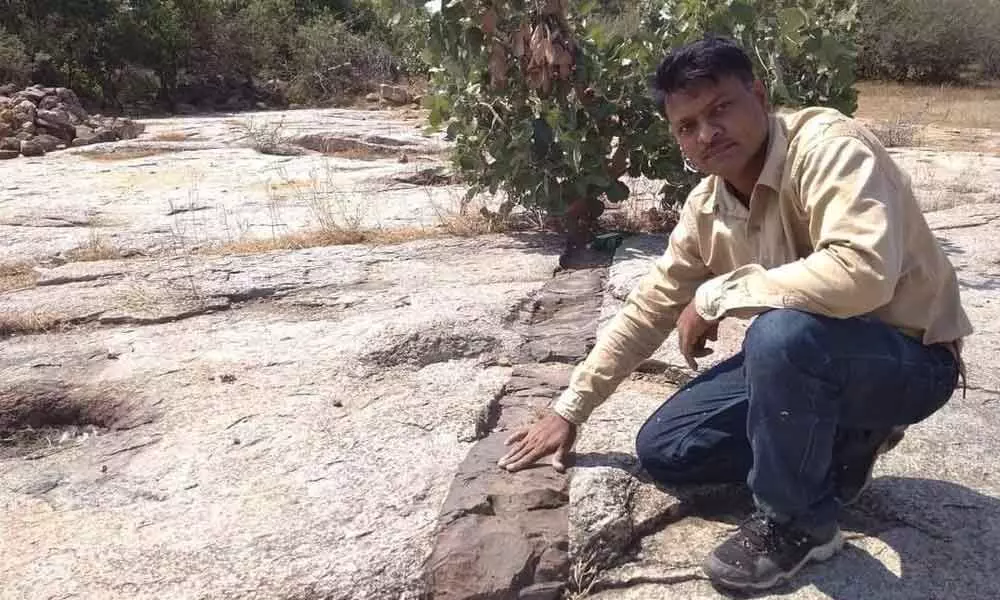Live
- Free entry to Visakha Museum on November 24
- Steel industry key to India’s economic growth: HDK
- Students in slums face accessibility challenges
- Early AI adoption saving Indians 2 hrs a day
- 5 lakh fishlings released into Tandava reservoir
- The role of habit building in mental wellness
- Efforts to improve fishermen’s livelihood highlighted
- JNCASR team develops new tech for early, accurate detection of HIV
- Grand finale of Master Orator season-5 held
- Can digital chemistry turn into real love ?
Just In
Telangana: Dykes drawing geologists attention


R Ratnakar Reddy, an archaeological enthusiast, showing the dyke at Veldanda village in Jangaon district
Jangaon ,which is considered as a haven for the archaeologists, also appears to be geologists' point of interest.
Jangaon: Jangaon ,which is considered as a haven for the archaeologists, also appears to be geologists' point of interest. Evidences suggest that dykes exist abundantly in the Central Deccan Volcanic Province in Maharashtra and the western coast. Dyke is a sheet of rock that is formed in a fracture of a pre-existing rock body. One such as a rare dyke has come to light near Veldanda village under Narmetta mandal, 107 kms northeast of Hyderabad. Thanks to R Ratnakar Reddy, an archaeological enthusiast, whose passion had triggered several archaeological surveys such as the remnants of nearly 3,000-year-old settlement found near Gajagirigutta in the district.
Reddy found a dyke on a rock formation spread over 2 kilometers located behind the Trikutalayam, also known as Rajanna temple. Reddy contacted several geologists showing the images of the dyke on the rock formation. The experts believed that the two-foot width dike is a magmatic dike that form when magma flows into a crack then solidifies as a sheet intrusion, either cutting across layers of rock or through a contiguous mass of rock.
According to Reddy, the dike believed to have formed some 250 crore years ago. "The dyke is a formation of magnesium and nickel. The dyke formation is also known as black granite which is used as ornamental stones and dimension stones," Reddy said. He also pointed out those sculptures in Ramappa Temple, which recently made to the UNESCO's World Heritage Sites, were made of black granite.
A study into the dyke at Veldanda by geologists could provide more insights into rock formations. According to local folklore, dyke is the mark of a chariot wheel. It appeared when the presiding deity Rajanna left the temple for Vemulawada, the abode of Sri Raja Rajeshwara Swamy temple, in Rajanna-Sircilla district.
Reddy thanked Venugopal Rao Chakilam, Retired deputy director general, GSI, Mallikarjun Reddy geologist, Kakatiya University, Harshavardhan of Eluru, former Assistant professor at Dravidian University (Kuppam), Srinivas, geologist, and others who helped him in gathering the information about the dyke.

© 2024 Hyderabad Media House Limited/The Hans India. All rights reserved. Powered by hocalwire.com






